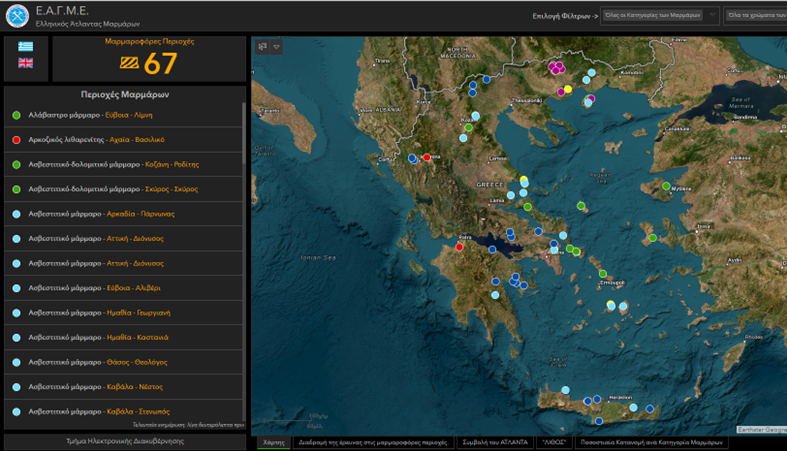The Hellenic Survey of Geology and Mineral Exploration (H.S.G.M.E.) has successfully completed a highly significant project — the creation of the first digital map, the “Hellenic Marble Atlas,” which includes all marbles (natural ornamental stones) of Greece, along with their physical, mechanical, and aesthetic characteristics.
The digital map of Greece’s marbles, developed as part of the country’s digital transformation initiative, is available in both Greek and English, allowing professionals in the marble industry to access and utilize it both domestically and internationally.
Through a specially designed interactive application created for the needs of the project and the “Marble Atlas,” users can explore a digital map showcasing nearly all types of natural ornamental stones (calcitic and dolomitic marbles, limestones, slates, sandstones, etc.) extracted from licensed quarries across Greece’s marble-producing regions. By selecting a specific material, users gain access to a wealth of useful information. Essentially, the map serves as both an interactive platform and a dynamic database that is continuously updated with new types of decorative stones from across the country.
“Each marble has been named according to the EN 12440 standard rather than its commercial name. For every entry, detailed geological and petrographic information, physical and mechanical properties, application examples, and usage data are provided,” notes Dr. Konstantinos Laskaridis, Technical Supervisor of the LITHOS Laboratory and Head of the Directorate of Mineral Resources and Mining of H.S.G.M.E.
Access to the contents of the digital map “Hellenic Marble Atlas” is available through the H.S.G.M.E. website at the following link:
https://gaia.igme.gr/portal/apps/opsdashboard/index.html#/de18c9f57cf54843831a0c594bf3ae7c


